This step by step diy article is about how to tile corners. Tiling interior and outside corners has proved to be a difficult task for most diy-ers, as you need experience and several techniques to master it. In addition, many homeowners are reluctant to start a tile project by themselves, even though they could save a great amount of money and invest them in quality materials. Nevertheless, we are aware of your questions regarding tile corners and we will try to answer to them in this step-by-step article. Don’t forget to check out the rest of our tile projects, if you want to see more step by step tutorials.
First of all, you have to prepare the walls in a professional manner before tiling the corners. Therefore, you have to install hardibacker on the areas exposed to water and seal the joints by using thinset and paper tape. Next, sand the joints as to make them level with the rest of the wall, otherwise the tiles wouldn’t be plumb. If the walls are made of bricks, then you have to remove all the irregularities with a large scraper and brush the whole surface, to clean the dust and other residues.
Next, you have to decide if you are going to use corner trims or not. The tile corner trims come in a large variety of shapes and colors, as to make them match with the design of your kitchen / bathroom tiles. From our previous projects, we recommend you to install corner trims, at least for the outside corners, as you will get a neat look. On the other hand, if you like the traditional appearance of tile corners, you can pull it through without using the tile corner trims, but it will take more time and effort from your side.
The layout of the tiles is extremely important when starting a tile project by yourself. Therefore you have to make up your mind whether you start with a full tile or center the pattern as to obtain a symmetrical layout. There is no right answer to this issue, as it depends on your tastes and needs, but we usually start with a full tile in the most visible corners of the room. See all my Premium Plans in the Shop.
Made from this plan
In order to tile corners, you need the following:
Materials
- Thin set mortar / premixed mastic
- Tiles, spacers
- Tile corner trim
Tools
- Safety gloves, glasses
- Drill machinery with mixing palette
- Bucket, rubber hammer
- Cutter / miter saw
- Score and snap cutter, wet saw
Tips
- Use tile plastic corner trims for a neat look
- Take accurate measurements before cutting the tiles
Time
- Two Hours
How to tile interior corners
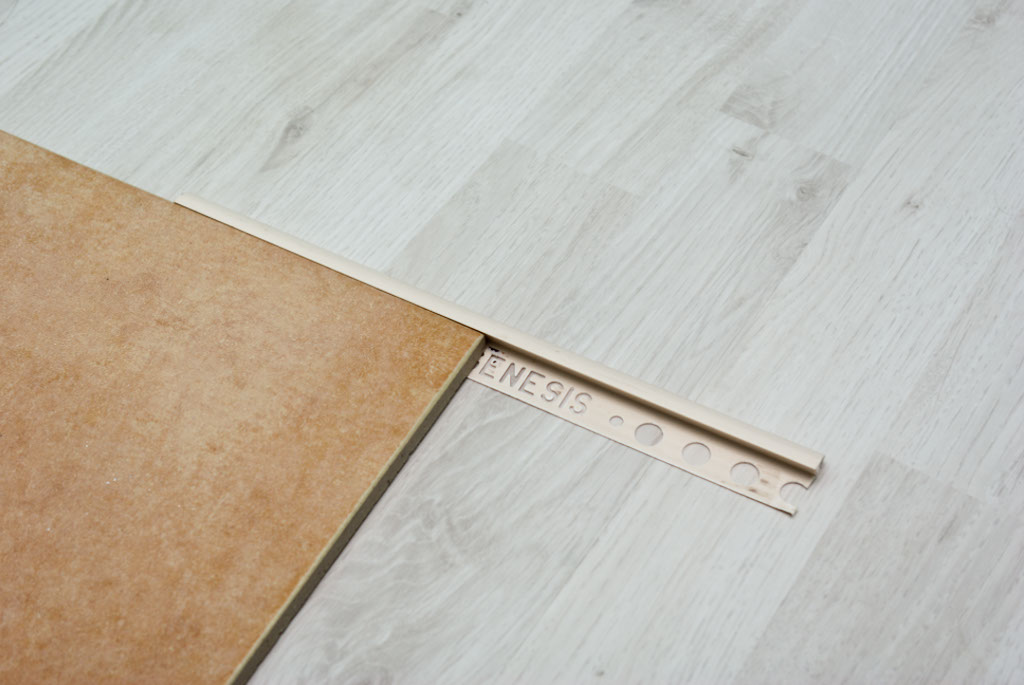
In order to tile an interior corner, you have two broad options: on one hand you can use a corner trim, while on the other hand you could do it by using only the tiles. Either way the operation is straightforward, so it is up to you if you want to install the plastic corner trim.
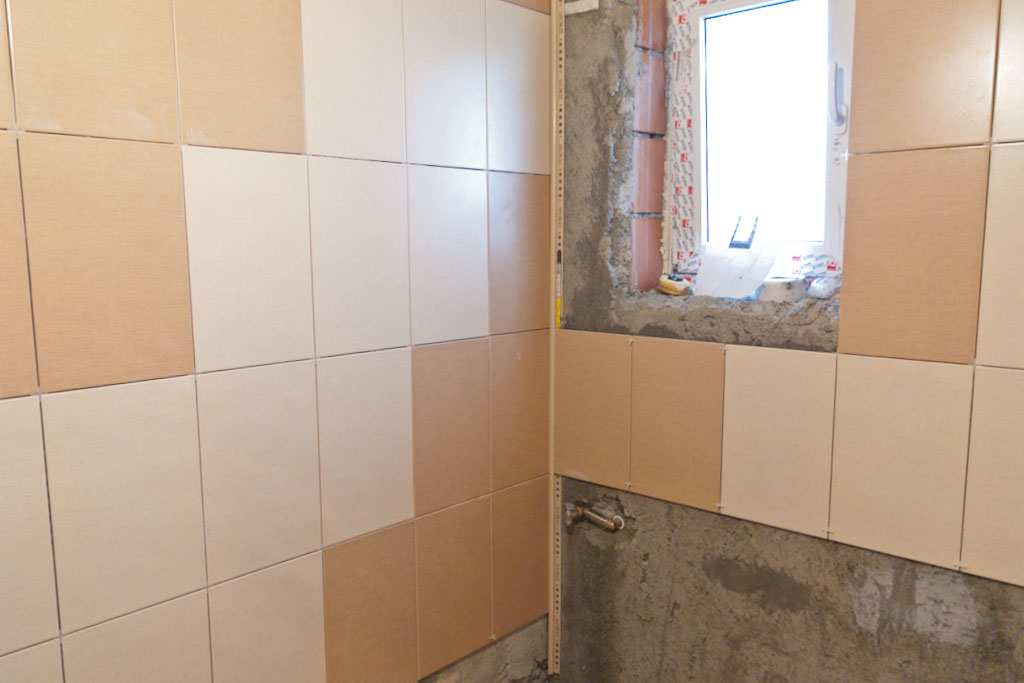
Using an inside corner trim would give a modern edge to your bathroom, therefore install it properly. As the walls cannot be perfectly vertical, you have to measure each tile before installing it into place. If it is a little too wide, you could adjust it wit tile nippers, as to fit perfectly.
Use a spirit level to make sure the corner trim is perfectly plumb and adjust it if necessary. In order to secure the corner trim, you have to apply adhesive on the back of the tiles and fit them into place. In this way, the tiles will lock the plastic corner trim in place.
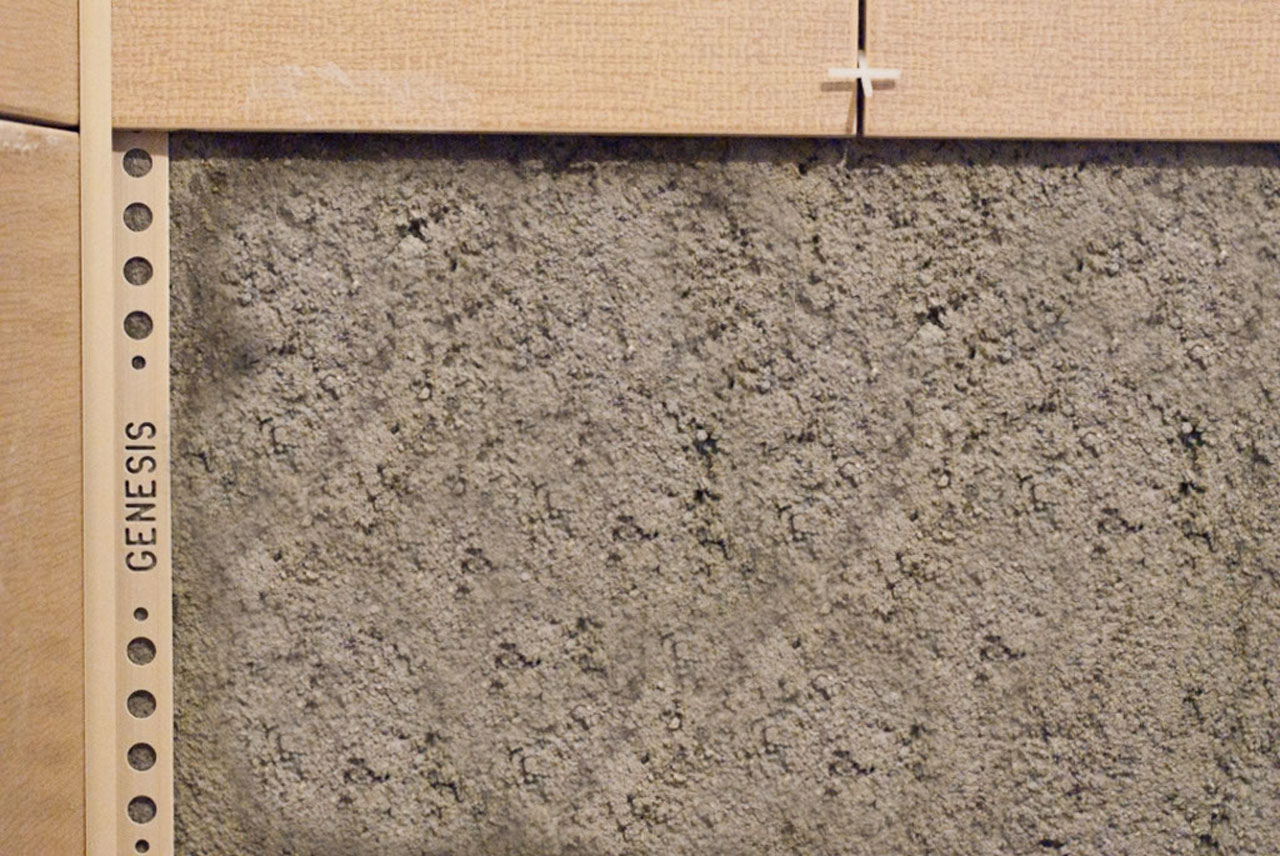
In this image, you can have a better view on how to tile an interior corner. Therefore, you should notice the channel inside the plastic trim, where you should fit the tiles. Remember that you shouldn’t push the tile too hard inside the corner trim, on the contrary, make sure you leave some room for expansions (1/10” – 0.25 cm).
Use spacers between the tiles as to get even joints, as in the image. In addition, verify if the corner trims are installed properly, as there shouldn’t be any gap between it and the tiles.
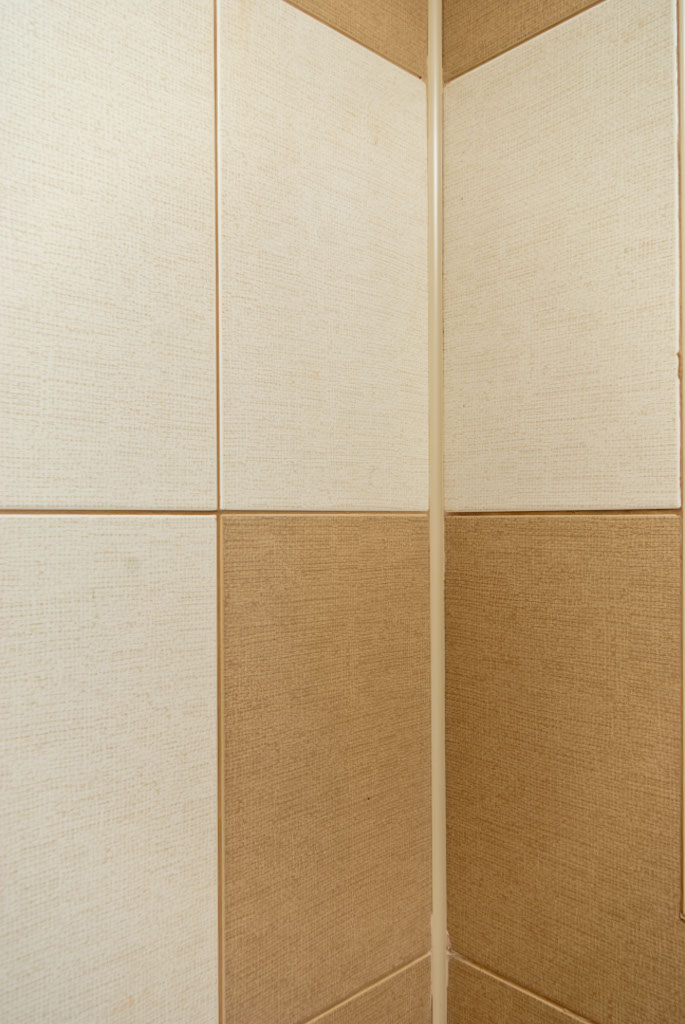
After you finish tiling the internal corners, you should fill the gaps with a water-resistant grout. Nevertheless, we recommend you to use a bead of silicone to fill any gap between the trim and the tiles. Clean thoroughly the tile with a dry cloth, as to get the job done in a professional manner.
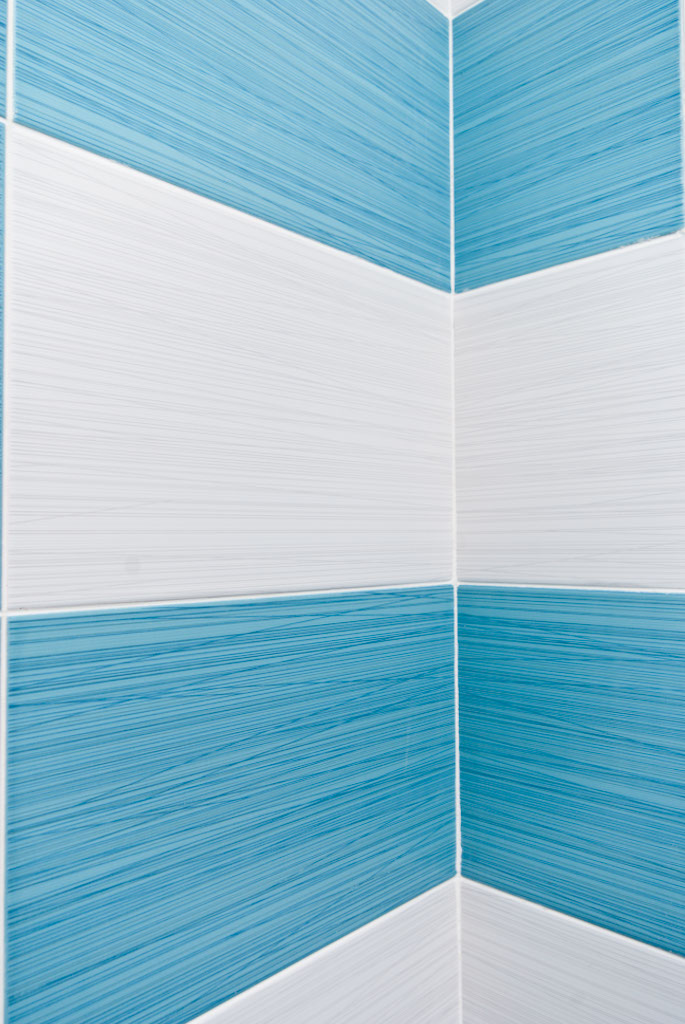
Nevertheless, you can tile an inside corner without using a plastic trim. All you have to do is to start installing wall tile on one side of the corner. Spread the adhesive on the wall with a notched float and make sure the tiles are plumb (use a spirit level to be sure).
Install the wall tiles in such a way, as to have a clearance space (1/8-1/10”) between the corner and the tiles, to leave them enough room to expand. One of the biggest mistakes you could make it would be to leave no room for the tiles to expand, as in time they might create peaks.
When you tile the other side of the corner, the tiles should overlap, but make sure you leave a clearance gap between them (place a spacer). Next, use caulk to fill the corner gap, as a regular grout isn’t flexible and would crack in a few months.
How to tile outside corners
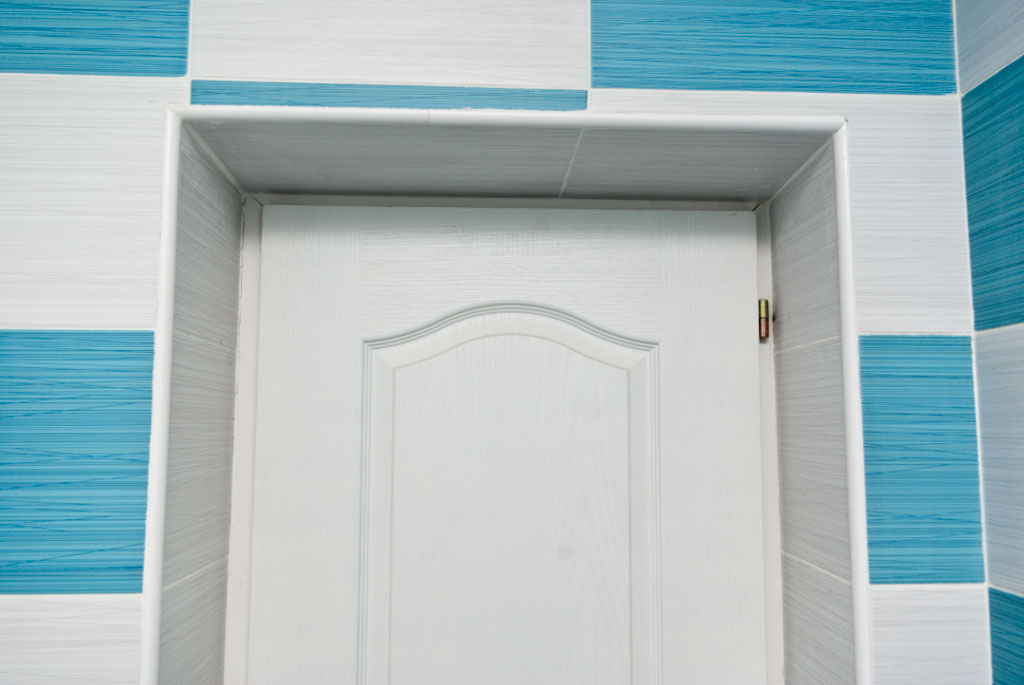
Tiling an outside corner is easy if you use tile trim and it would also give a professional look to your bathroom. Outside tile trims come in many shapes, sizes and colors, so it is easy to find the most suitable one for your needs and tastes. As you can see in the image, using a corner trim would enhance the appearance of your project, so make sure you install it properly as to fully benefit from its advantages.
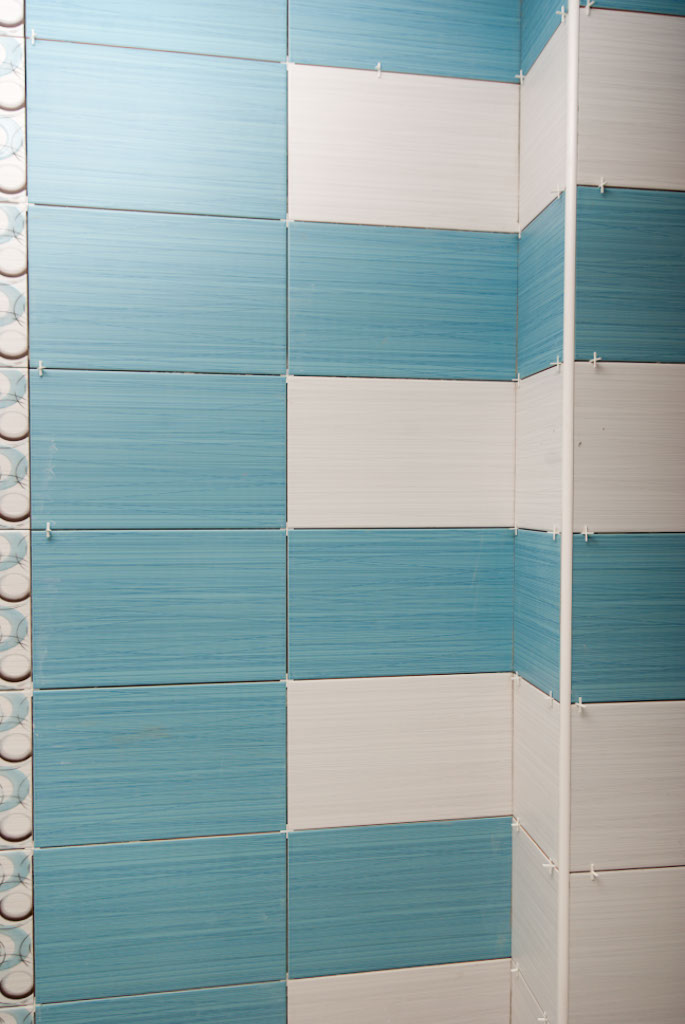
Tile the wall in a professional manner until you reach the outside corner. Then you have to adjust the length of the corner trim with a cutter, as to fit into place. Use a large spirit level to see if the corner is plumb from top to bottom. Next, spread tile adhesive on the wall corner and secure the plastic corner trim, making sure it is perfectly plumb. Use a spirit level or a plumb line to check if the outside corner trim is vertical and adjust it if necessary.
Last but not least, you have to install the tiles in place on the whole surface of the wall. Make sure you leave a clearance space inside the trim, between the tiles and the plastic corner trim. Use a sponge to remove the excess adhesive and then clean the tiles with a dry cloth, making you don’t move them from place. Afterwards, you have to leave the adhesive to dry, before you apply the grout.
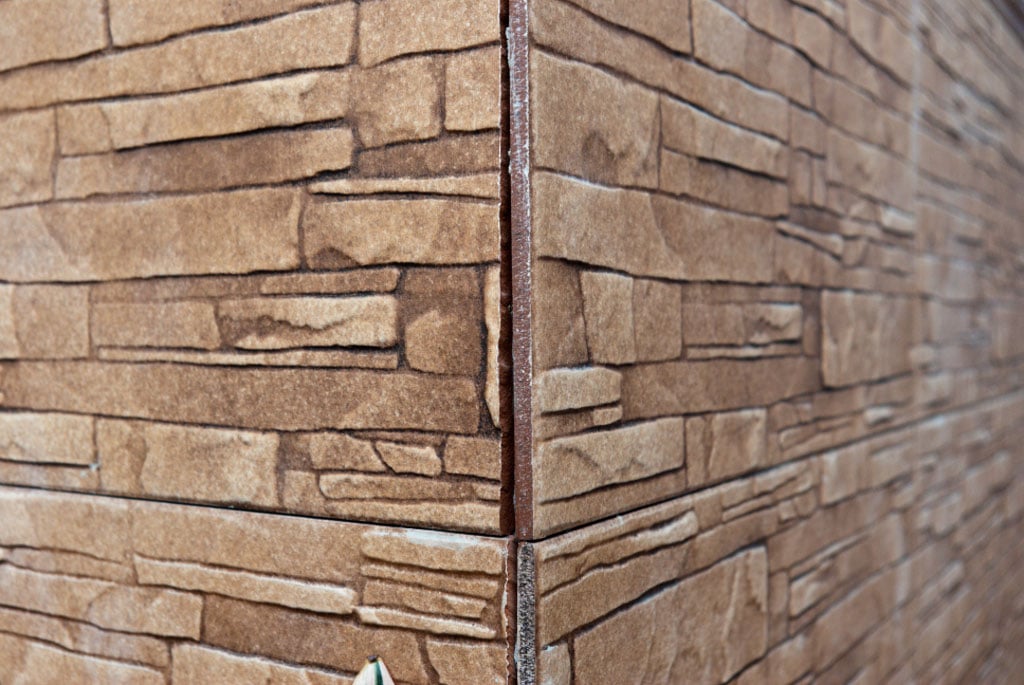
On the other hand, you can tile a corner without using a plastic trim. Nevertheless, it won’t look professional and you might regret that you haven’t used the corner trim. As you can see in the image, the tile edges will be visible even though you grout the gap between them.
My best tips for tiling corners
Tiling corners can be a bit tricky, but with the right approach, you can achieve clean, professional results. Here are my best tips for tiling corners:
1. Plan the Layout: Start by dry-laying your tiles and planning the layout, especially around corners. You want to avoid thin slivers of tile in the corners, so adjust your layout to ensure even and full tiles where possible.
2. Cut Tiles to Fit: Measure carefully and cut tiles to fit neatly into the corners. Use a tile cutter or wet saw for precision cuts. Always dry-fit the tiles before applying adhesive to make sure they fit snugly.
3. Use Spacers for Consistent Grout Lines: Even in corners, maintain consistent grout lines using tile spacers. This helps ensure that the grout joints are uniform and gives your project a polished look.
4. Start from the Most Visible Corner: If you have multiple corners to tile, start from the most visible one. That way, you can ensure the cleanest cuts and best fit in areas that will be most noticeable. Any imperfections can be hidden in less visible areas.
5. Tile One Wall at a Time: When tiling inside corners (where two walls meet), it’s best to tile one wall at a time. Finish one wall and let it dry before starting the adjacent wall. This ensures a clean corner and helps avoid tiles shifting or sliding out of place.
6. Leave an Expansion Gap: Just like with other areas of tiling, leave a small expansion gap (around 1/8 inch) in the corner to allow for natural movement. This gap will later be filled with caulk or grout.
7. Use Caulk Instead of Grout in the Corners: For inside corners, it’s better to use color-matched silicone caulk rather than grout. Corners are prone to movement, and caulk is flexible enough to handle the natural expansion and contraction without cracking like grout can.
8. Mitre or Overlap for Outside Corners: For outside corners, you can either miter the tile edges at a 45-degree angle or use bullnose tiles that wrap around the edge. Another option is to overlap the tiles, with one tile covering the edge of the other for a clean finish. Make sure your cuts are precise to create a seamless look.
9. Consider Tile Trims: For a clean and professional finish, especially on outside corners, consider using tile trims or edging strips. These metal or plastic trims protect the edges of the tiles and give the corner a polished, finished appearance.
10. Smooth Grout Joints: Once the tiles are in place and the adhesive has dried, carefully grout the joints, including around the corners. Use a damp sponge to smooth the grout lines for a seamless look.
By following these tips, your corners will be well-aligned, durable, and have a clean, professional finish that elevates the entire tiling project!
Thank you for reading our article on how to tile corners and we recommend you to check out the rest of our tile projects. Don’t forget to Like and Share our articles with your friends, by using the social media widgets.
